
The Ultimate Pest Guide For Maryland Homeowners
Identifying & Controlling 28 Common Pests
Pests are everywhere. In fact, insects first evolved 479 million years ago along with Earth’s first plants ... and they’ve been with us ever since.
But just because they got here first doesn’t mean they can continue to send us into hysterics every time we see a cockroach scatter across our counter or ants running along the floor near our front door. We are the larger species after all!
For the most part, we deal with bugs on a daily basis as we go about our days; it’s just a normal part of life. But when bugs get into our spaces -- especially places where we live, eat, and spend downtime -- they become a nuisance.
Of all the pests that can bother us, there are certainly some that are more of an issue here in Maryland.
That’s why we’ve put together a comprehensive guide of the most common household and outdoor pests in Maryland. The goal is to help you better identify, prevent, and control these insects so you can take back your personal space from the bugs that get in your way.
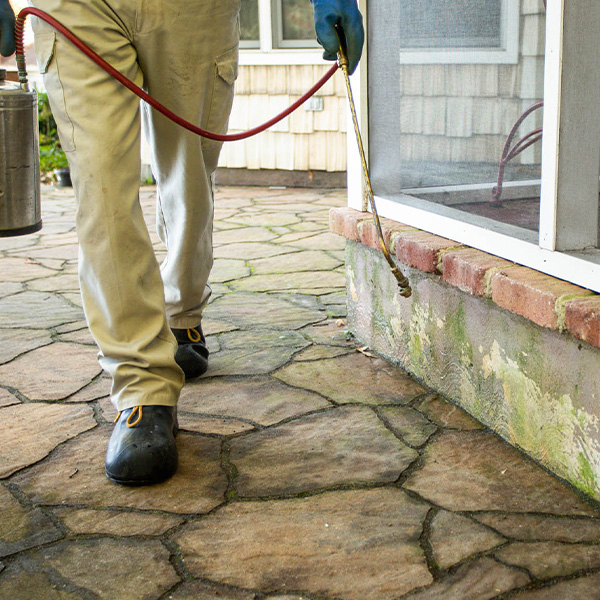
Pest Guide List
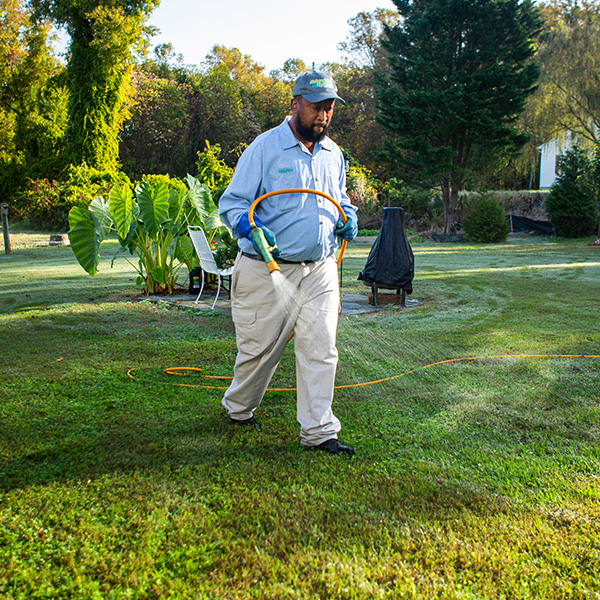
1. Odorous House Ant
.2412171416367.jpeg)
These ⅛-inch pests are some of the more common ones you might find crawling around your kitchen or bathroom floor. They are black or brown and don’t have “odor” in their name for nothing: When they are crushed they emit a stinky smell.
Unfortunately, these ants can have multiple queens ruling their colony, which makes them a bit more difficult to control.
Identification Facts
- While identifying this ant physically might be difficult without experience, you should be able to identify it by the rotten odor it emits when squashed.
- Their tiny size enables them to easily get into your food if it’s not sealed in containers with lids.
- They can usually be found close to food sources.
Prevention Tips
- Regularly clean your home (including behind appliances during occasional deep cleans) to prevent attracting these ants with crumbs and spill debris.
- Store trash in a can with a lid.
- Store food like rice, cereal, and snacks in sealed containers or in your refrigerator.
- Trim outside vegetation and shrubbery that is near your home to avoid these ants congregating too close to entryways, where they could be more tempted to come inside.
- Seal holes in your screens, foundation cracks and door gaps that could be entryways for these small pests.
Treatment Tips
- Take prevention tips seriously because eliminating the problem before it starts is best.
- Use a contact insecticide to knock down the initial population.
- Use a non-repellent insecticide hidden in a protein or sugar source. Ants take this bait to their colonies to unknowingly kill the queen and knock out the main source of ants in your home.
- Keep up with quarterly barrier treatments around your home outside so ants stay out.
2. Pavement Ants

Pavement ants like to hang out exactly where their name says: behind and underneath pavement areas, such as sidewalks, driveways, and foundations.
New colonies typically appear in late spring/early summer during mating flights, but indoors this can happen other times as well. You might find these ants under baseboards, near heating ducts or radiators, crawling around floor registers, or in sunrooms.
Just like us, they like sweet and greasy foods, as well as protein.
Identification Facts
- These ants are light to dark brown in color with two segments and a stinger.
- These ants move a bit slower than other ants. (It’s probably from all those sweet and greasy foods!)
Prevention Tips
- These ants, like so many others, are drawn to food. Keep kitchen floors, counters, cupboards, sinks, and other kitchen surfaces clean. Ants go for the tiniest of crumbs or spills.
- Seal up small holes where ants could find their way indoors.
- Use these prevention tips in late spring and summer when new colonies of these ants appear and during times of extreme rain or drought when ants could be looking for drier conditions or access to water.
Treatment Tips
- Controlling a visible population can be done with a contact insecticide.
- Baits are the best way to target the queen to destroy the main source of pavement ants in your home. Baits hide an insecticide in a protein or sugar source so ants are drawn to it and then take it back to their colony.
- Quarterly exterior barrier treatments can keep pavement ants from coming back inside.
3. Carpenter Ants
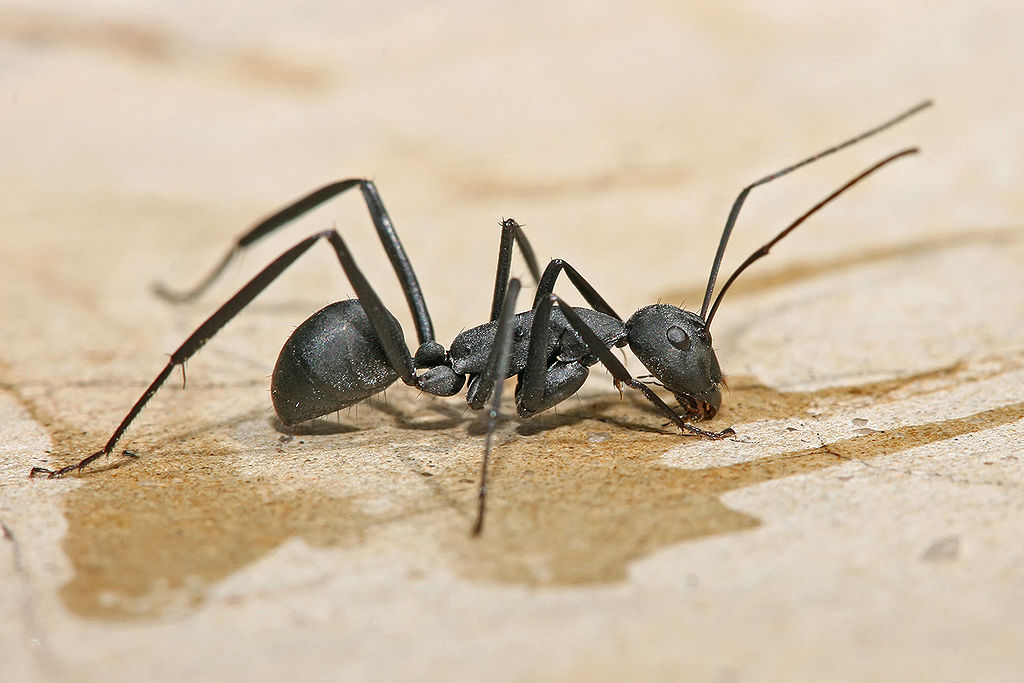
These black monsters are usually three to five times the size of odorous house ants or pavement ants -- ⅜ to ½ of an inch long versus ⅛ of an inch long.
And monsters they truly are when it comes to destruction to your home. To build their nests, carpenter ants tunnel through the wood in your frames, walls, floors, and other structures. All this burrowing can lead to structure damage.
Despite their large size, these ants can be hard to spot because they like to hide.
Identification Facts
- These ants are the largest and blackest ant you’ll find in your home.
- As they tunnel in your wood, they can leave small bits of sawdust behind.
Prevention Tips
- Keep trees and shrubs near your home trimmed to limit entry pathways.
- Keep firewood a minimum of 20 feet away from your home since carpenter ants like to nest in wood piles.
- Seal cracks, gaps, and any other small entryways into your home to minimize access points.
- Minimize moisture by fixing water leaks and ensuring gutters and downspouts guide rain away from your home.
Treatment Tips
- Indoor and outdoor treatments can help control and manage carpenter ant populations.
- Indoor treatments can include contact insecticides and/or baits.
- Outdoor treatments involve quarterly pest control barriers that use a smell or taste these ants dislike so they stay away from your home.
4. Spiders
.2412171416369.jpeg)
Spiders don’t have the best reputation. It probably has to do with those eight long legs and overall creepy demeanor. Nothing gives you the shivers faster than the tickle of a web on your arm or the slow crawl of a spider up your leg.
Despite being a nuisance, at least spiders help take care of mosquitoes and other pests lurking about. But if you’re noticing a lot of spiders in and around your home, that signifies you have a good population of their food source around: other pests. So your spider problem could be a full-on, multiple-pest problem.
Identification Facts
- In Maryland, we have two venomous spiders: black widows and brown recluse. Black widows are native to the state and are most often found outdoors. They are red and black; stay away from any spider you see with this color combination. Brown recluse, while occasionally found in Maryland, are less of a worry because they tend to hitch rides to the state from the south.
- The wolf spider is brown and a bit furrier and bulkier than other spiders. Mostly outdoor spiders, they can come indoors in the fall when temperatures get cooler.
- In your home, you’ll most often find yellow house spiders, cobweb spiders, and jumping spiders. Yellow house spiders have yellow-green, ¼-inch bodies. Cobweb spiders are small and build webs near your windows and doors to try and catch other insects. Jumping spiders are often mistaken for black widows because of their black, hairy appearance, and they are often seen on ceilings or walls as they take short, quick jumps.
Prevention Tips
- Spiders love clutter; reduce clutter to reduce arachnids.
- Vacuum regularly, including under and behind furniture and around window sills and floorboards.
- Use a duster, broom, or hose attachment on a vacuum to eliminate cobwebs as you see them. If you continually disturb their webs, spiders will move.
- Seal your door, window, and foundation cracks to keep spiders -- and their food source: other insects -- out.
Treatment Tips
- Exterminators use a tool called a Webster to eliminate webs from the ground up to two stories high around your home.
- Make sure your pest control professional eliminates other pest problems in and around your home so spiders aren’t drawn in.
- Quarterly pest control treatments around your home can stop most pests from getting inside after they’ve been evacuated.
5. Carpenter Bees

These solitary bees get their name because they like to work with wood -- particularly, they build nests by tunneling into wood. Females build their nests by tunneling into wood, possibly in your deck, in fence posts, in picnic tables, in sills, or in other outdoor structures.
While a single hole in your wood won’t cause structural damage, multiple tunnels that are continually reused and expanded can weaken wood and expose it to moisture and mold.
You mostly see these bees in late spring or early summer.
Identification Facts
- Carpenter bees are large -- ¾ to 1 inch long.
- Their midsections are covered with yellow fuzz, while their hind section is shiny and black.
- Carpenter bees are often mistaken for bumblebees, which are similar in size, but the bumblebee is a more social bee that lives with others in underground nests.
- You may find perfectly circular holes that are approximately a half-inch in diameter and go 1 to 2 inches into the wood before turning at an angle to follow the wood grain.
- Sometimes you’ll see piles of coarse sawdust below the holes; this is the chewed wood that female bees push out of holes as they excavate their nests.
Prevention Tips
- When seeking out nesting sites, female carpenter bees tend to gravitate toward raw, unfinished wood or stained, weathered wood. Keep your wood well-maintained and painted or stained to limit carpenter bee nests. Do this in early spring before nest building (before April to May) or late summer.
- Fill holes that you find in your wood so they don’t attract carpenter bees.
Treatment Tips
- Bee control can be tough to do on your own; a professional can help identify the source of the problem and effectively treat it.
- A quarterly pest control treatment can protect your property from further carpenter bee infestations.
6. Paper Wasps
.2412171416368.jpg)
Paper wasps build their nests out of -- you guessed it -- paper!
Often confused with yellowjackets, paper wasps are very common in Maryland. The big difference: paper wasps fly slower. But that doesn’t mean they fly so slow they won’t sting you. Usually docile, female paper wasps will sting you if you are so near to their nest that you feel threatened or if you wave your arms around in quick movements versus slowly walking away.
While they are beneficial for pollination and reducing other insect populations, when they create nests on your property they can become threatening to you and your family members.
Identification Facts
- Paper wasps are ⅝ to ¾ of an inch long, brownish with yellow or reddish marks and long, thin legs.
- Paper wasp nests are made of paper and resemble an umbrella shape. You can find them on twigs, branches, door frames, or eaves.
Prevention Tips
- Since paper wasps are attracted to organic material, keep your yard clean by picking up leaf litter and debris and storing trash in sealed containers.
- Trim back overhanging tree branches and shrubbery to limit nesting areas.
Treatment Tips
- It’s always best to hire a professional to tackle paper wasp nests since these pests will instantly send out pheromones to sting if they feel their nest is threatened.
- Professionals will wear the proper safety equipment and use insecticides to help remove paper wasps from your property.
- Once paper wasps are gone, quarterly pest control treatments help keep them away.
7. Yellowjackets
.2412171416368.jpeg)
Afraid of getting stung by a bee? Yellowjackets are probably to blame for your fear. They are responsible for most of the stings of all bees and wasps.
And not only are they the most frequent stingers, they are each capable of multiple stings. If you are mowing or causing vibrations around a ground nest, they can easily become angry and swarm to attack.
While yellowjackets are considered beneficial insects because they eat other insects, they do become aggressive in late summer and fall as they are attracted to human food and drink.
Identification Facts
- Adult yellowjackets are ⅜ to ⅝ of an inch long with yellow and black striped abdomens.
- Yellowjackets are social; their nests and colonies can contain thousands of workers by late summer/early fall.
Prevention Tips
- Keep trash in containers with secure lids.
- Don’t leave food outdoors for long periods of time, especially later in summer/early fall.
Treatment Tips
- Hire a pest control professional to help you find yellowjacket nests and eliminate them from your yard. Ground nests are usually located under shrubs, logs, rock piles, or other protected spots. Nests can also be found in fence posts, play equipment, and picnic table supports.
- After eliminating yellowjackets, quarterly pest control treatments help keep them away.
8. Hornets
_Nest_-_Kitchener-_Ontario_2019-09-14_(02).2412171416368.jpeg)
When you have a lot of hornets buzzing around your property, it can make enjoying your backyard tough. This is particularly the case when they sting; since hornets are large, their stings can be painful.
The European hornet is the most common one found in Maryland. They were introduced to the U.S. from Europe in the 1800s.
Identification Facts
- Hornets are brown with yellow stripes on their abdomens and light-colored faces.
- They are ¾ to 1 ⅜ inches long.
- Hornet nests are paper-based, fragile, and tan. They are typically located in concealed places like hollow trees, barns, attics, and even hollow house walls.
Prevention Tips
- Keep your yard free of favorite nest-building places, such as rotted out trees, holes or crevices on your home exterior, and open sheds and barns.
- Limit water sources by fixing drips in outdoor spigots, cleaning out gutters, and ensuring proper lawn drainage.
- Keep tight-fitting lids on outdoor trash bins to limit food sources.
Treatment Tips
- Removing a hornet nest on your own is never a good idea because they can swarm. Hire a professional with the skills and equipment necessary to safely remove nests.
- Quarterly checkups and pest control applications can continue to deter hornets from making nests in your yard.
9. Cicada Killers
_with_Cicada_-_Bles_Park-_Va.2412171416368.jpeg)
This is another pest with a name that clearly states what the pest is best known for. Cicada killers get their name by paralyzing cicadas to bring back to their nests.
This next part is pretty gross: They lay their eggs in the bodies of the cicadas they caught, and then those cicadas become the primary food source for their larvae.
These wasps are pretty solitary; they don’t live in large numbers in a single nest like other more social wasps.
Identification Facts
- Cicada killers are 2 inches long with black and pale yellow stripes.
- Nests are usually found in the ground in lawns or soft dirt.
Prevention Tips
- Keep your lawn mowed at a height of 3 to 4 inches in the summer to discourage cicada killers from digging tunnels.
- Water your lawn properly to promote well-nourished turf and strong roots.
Treatment Tips
- A professional pest control company can treat existing cicada killer holes.
- Quarterly pest control, as well as proper lawn care, can help continue to keep cicada killers from choosing your property as a nesting site.
10. Centipedes
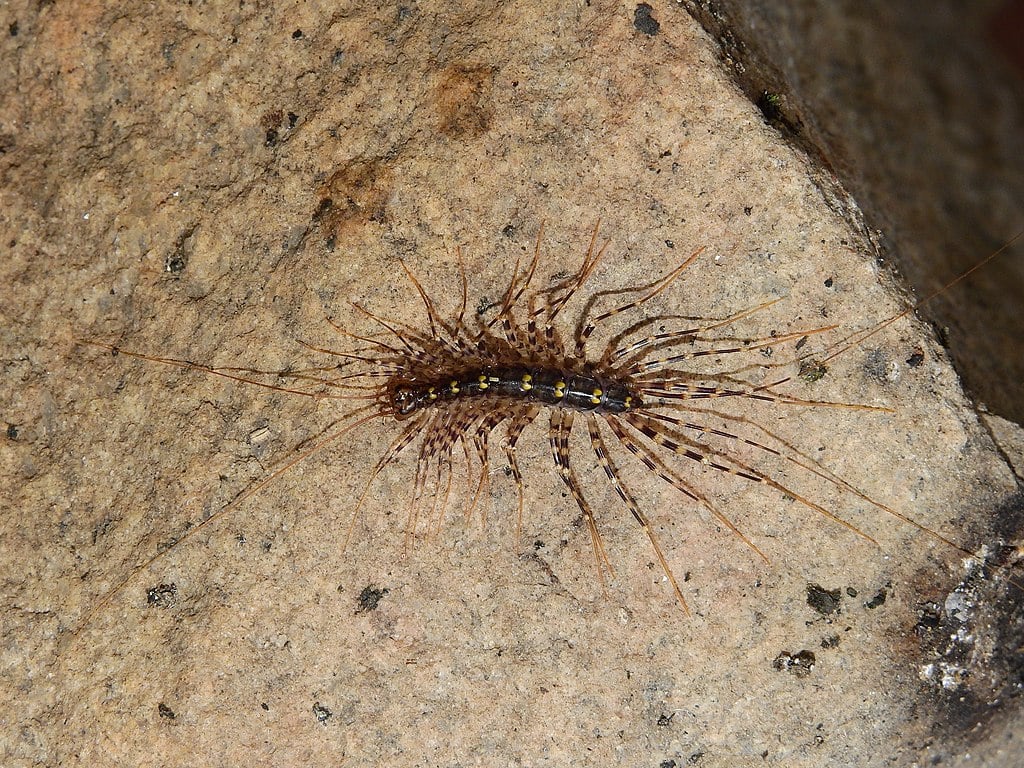
Any time you encounter a bug with multiple pairs of legs, you get the shivers. Who wouldn’t? Centipedes are the perfect merger of a spider and a worm with their long body and crazy legs.
Centipedes enjoy damp spaces outside, but they are also drawn to humid areas in your home, such as basements, crawlspaces, attics, or storage areas.
They eat other pests, so that’s a bonus, but aren’t there much better ways to take care of bugs in your home than entertaining centipedes?
Identification Facts
- House centipedes can be 1-inch to 1.5-inches long. But the antennae and last pair of legs can make them appear longer. The largest centipedes (not typically the house centipede) can be 6 total inches long.
- House centipedes are normally grayish-yellow.
- They are fast movers.
- These pests can have anywhere from 30 to more than 100 legs, with a rear pair pointing backwards.
Prevention Tips
- Seal crack, holes, and gaps in foundation.
- Keep window and door frames in good shape and weather-sealed.
- Manage moisture problems in your basement or crawl spaces.
- Keep organic material like leaf litter and brush a few feet away from your home.
- Keep firewood stacks 20 feet away from your home.
Treatment Tips
- A pest control technician will conduct a general pest inspection and look for common entry points, sealing anything that is ½ inch in size or less.
- Perimeter pest control treatments each quarter can help put a barrier around your home to prevent these pests from coming back in.
11. Millipedes

Millipedes are normally content living outside under rocks, mulch, and leaf piles, dining on decaying plant matter. In fact, they’ve been doing just that for millions of years.
But when it becomes dry outside, they seek moisture -- and you have plenty of that indoors. They also seek escape when it’s too wet outside, and they want to avoid floods.
While millipedes don’t bite or cause serious damage, they are seriously annoying.
Identification Facts
- Millipedes have worm-like bodies and hundreds of tiny legs.
- They can be brown, reddish, or black.
Prevention Tips
- Remove moist, decaying plant matter away from your home. This includes mulch, leaves, grass clippings, and compost piles.
- Seal any entry points into your home. These are typically cracks in foundation or small holes around windows and doors.
- Clean out gutters since these are places where moisture and decaying plant matter can collect.
- Dry any moist, wet areas indoors, such as crawl spaces and basements.
Treatment Tips
- Not sure where to look for your millipede problem source? A pest control professional can search their common hideouts and find any entry points you have, sealing those less than ½ inch in size.
- Sign up for quarterly perimeter pest control treatments to keep millipedes from returning once you eliminate them.
12. Silverfish

If you ever wondered what kind of pest would result if you merged the creature from “Alien” with the shark from “Jaws,” the silverfish is what you’d get.
Silverfish are like the creepier, ghost-like cousins of millipedes. Their color gives them the first part of their name, and the second part of their name can be attributed to the fish-wiggle-type movement they make as they scurry across your floor.
These creepy-crawlers can get into your dark, damp, humid places in larger numbers, especially if you have open cardboard boxes full of newspapers and magazines lying about. These are their favorite things to feed on.
Identification Facts
- Silverfish are silvery in appearance and have a fish-like body shape.
- Instead of millions of legs like millipedes have, silverfish come with just three pairs of legs plus three long, bristle-like appendages at the rear end of their bodies.
- Silverfish move fast and are good climbers.
- They love high humidity -- upwards of 70% to 90%.
Prevention Tips
- Manage humidity by encouraging air flow in places like attics and crawl spaces. Open vents, use a dehumidifier, repair leaky pipes and drains, and eliminate moldy or wet wood.
- If you store old books and magazines in basements, attics, or garages, keep them in plastic containers with tight seals instead of in cardboard boxes.
- Caulk holes near basements, attics, door seals, and windows to limit entry points.
- Check for torn weather-stripping and replace those you find.
- Replace damaged screens on windows and doors to limit holes they can fit through.
Treatment Tips
- Silverfish move at night, which makes them hard to spot. Once in your home, they reproduce quickly. Call a licensed pest control professional if you suspect an infestation. They know where to look and can tell you how severe your infestation is and recommend treatment methods.
- Getting rid of silverfish usually involves using a boric acid bait.
- Quarterly pest control treatments can keep silverfish from coming back inside.
13. Springtails

Sometimes bugs are really small, but that doesn’t mean they aren’t also extremely annoying.
Springtails are one of these types of pests. They feed on algae, fungi, pollen, and decaying organic matter typically in soil outdoors. If you find them in your home -- maybe in bathrooms, kitchens, or basements -- it’s usually a sign of dampness and mold issues.
Identification Facts
- Springtails are very small -- 1 to 2 millimeters long.
- They are white or gray in color with a forked appendage on the rear of their bodies that enables them to jump.
- Springtails often travel in groups.
Prevention Tips
- Fix water leaks, dry out moist areas, and run dehumidifiers.
- Check your irrigation system for leaks to ensure your lawn isn’t being overwatered, particularly in beds or grass sections closest to your home.
Treatment Tips
- Hire a professional pest control expert to inspect your home, identify and eliminate springtails.
- Quarterly pest control treatments can help keep these pests outside.
14. Earwigs
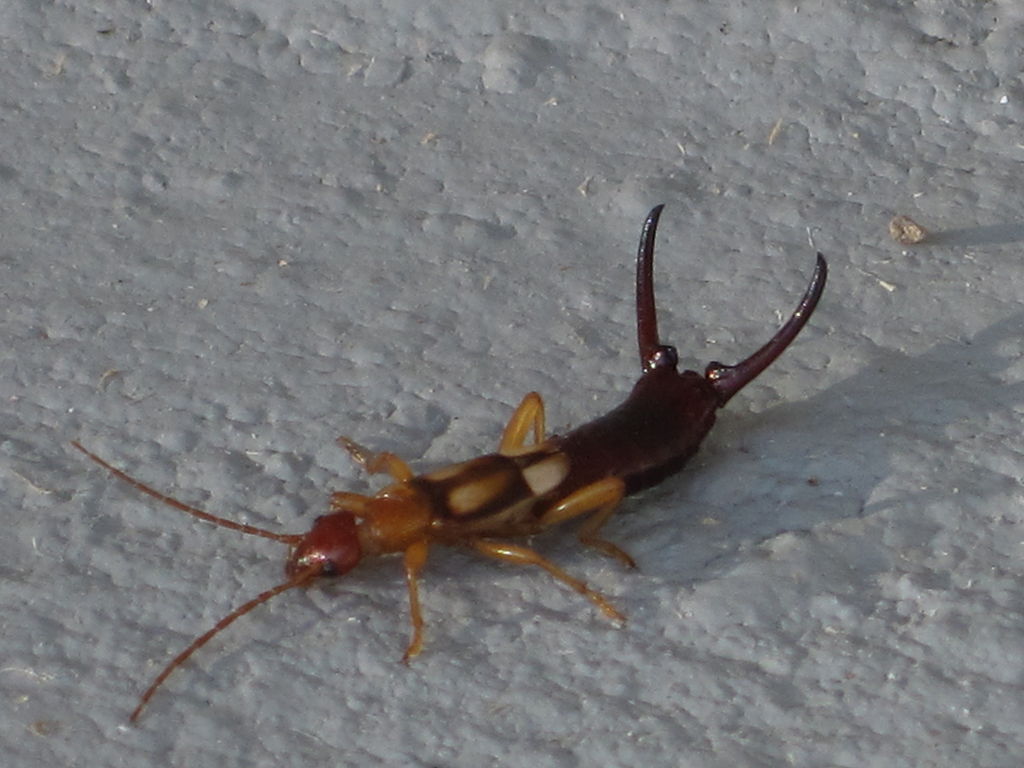
Earwigs love the night life. During the day, they hide in dark cracks in damp areas, such as under rocks or logs.
If you move wet leaves aside, earwigs will move fast to get back to hiding.
You can usually find these bugs in spring and summer, but as the temperatures get colder, they may move into your damp basement or crawlspace. To get in, they crawl under doors, through drains, and into cracks or holes near windows or under siding.
Identification Facts
- Adult earwigs are reddish-brown and ¾ of an inch long.
- Earwigs have six legs and long antennae.
- These pests have pincers in the back that they use to defend themselves from predators like birds, frogs, or lizards.
Prevention Tips
- Keep leaf litter and other fallen plant materials like twigs and branches away from your home.
- Clean out gutters and downspouts annually.
- Seal cracks and small holes to reduce entry points.
Treatment Tips
- Sign up for a free home inspection by a pest control professional if you suspect earwigs in your home.
- Once exterminators remove earwigs from your home and suggest prevention tips, quarterly perimeter pest control treatments can keep them away.
15. Pillbugs

Pillbugs are those gray, oval crustaceans that can roll up into balls when threatened.
Feeding on decaying organic matter, pillbugs are typically content outside in your garden. But these little pests can invade damp basements or crawl spaces if they are moist enough.
Identification Facts
- Pillbugs are gray and usually ½ to ¾ inch long.
- Pillbugs are oval in shape and roll into balls if approached.
Prevention Tips
- Modify conditions in your home that draw pill bugs, such as moist basements, by using dehumidifiers and fixing any water or moisture issues.
- Ventilation can help.
- Repair and seal cracks and openings along foundation walls, doors, and windows.
- Tighten up door and window openings with weather stripping.
- When moist conditions are removed, pillbugs will usually dry up and die.
Treatment Tips
- Use quarterly perimeter pest control treatments around your home to provide a barrier to keep pests like pillbugs outside.
16. Crickets
.2412171416367.jpeg)
Many pests quietly invade your home. Crickets, on the other hand, can make quite a racket. Males produce sound by rubbing the sharp edges of the base of one front wing along a file-like ridge on the underside of the other wing. The warmer the temperature, the faster their song.
In fact, crickets have three songs: one to attract females, one to warn away other males, and a courtship song they use before mating.
There are three types of crickets you might find in Maryland: house crickets, field crickets, and camel or cave crickets.
Camel or cave crickets are hungry pests that like to eat fungus, wood, carpets, cardboard, dust, and plants. And they will quickly reproduce in your basement if the conditions are appropriately damp and dark.
Identification Facts
- House crickets are ¾ to ⅞ inches long and light yellowish-brown in color. Field crickets are black and ½ inch to 1¼ inches long. Camel or cave crickets are light tan to dark brown and ½ inch to 1¼ inches long with a humped appearance to their bodies.
- House crickets like warm areas, while field crickets like lower floors of your home or basements. Camel or cave crickets like dark, moist places like basements or crawl spaces.
- Of the three common Maryland crickets, only house and field crickets sing.
- Cave or camel crickets can be present in moist areas in large numbers and jump when frightened, looking like popcorn kernels popping.
Prevention Tips
- Make sure doors and windows fit tightly; adjust, repair, or replace weather stripping.
- Caulk any holes around basement window frames, dryer vents, and other foundation areas.
- Clean up leaf or wood piles near your foundation; store firewood 20 feet from your home.
- Eliminate hiding spots by storing garbage cans in garages or sheds and ensuring they have tight-fitting lids.
- Solve high moisture problems in your basement by fixing leaks and using dehumidifiers.
Treatment Tips
- Exterminators use glue traps around entry points like basement windows to help handle initial infestations.
- Quarterly perimeter pest control treatments can keep crickets outside where they belong.
17. Boxelder Bugs
.2412171416369.jpeg)
A common pest of box elder trees and maples, boxelder bugs stand out on green leaves with their black and red markings.
In fall, which is usually October in central Maryland, the red nymphs and black adults collect in large numbers on trunks of boxelder trees near the ground. But feeding primarily occurs in summer on leaves, twigs, and seeds.
Swarms of these pests can sometimes be found on sunny white surfaces like porches, door and window frames, and on siding. Hiding in cracks in cold weather, they become more active on warmer days during fall and early winter. This is when they can find their way through cracks and become a nuisance indoors.
Identification Facts
- Boxelder bugs are oval in shape and ½ an inch long when fully grown.
- These pests are dull black and marked with red along the edges of the front wings. The nymphs have red abdomens.
Prevention Tips
- Eliminate hiding places like piles of wood and trash close to your home.
- Weatherproof, tighten door and window closures, and caulk entry points.
Treatment Tips
- Quarterly pest control treatments can create barriers around your home year-round to ensure boxelder bugs don’t come inside.
18. Stink Bugs

During fall, you might notice pests clinging to your door and window screens, trying to come inside.
They look like they come straight out of a science fiction thriller. They have broad, archaic-looking, shield-shaped bodies with stripes around the edges and even on the antennae. Legs jut out from their sides, and a relatively tiny head sits on top of their large frames.
They are stink bugs. And while they are fascinating, albeit ugly, specimens to observe, you don’t want them congregating in your home.
Identification Facts
- Stink bugs range in size from ½ inch to 1 inch.
- When you frighten or crush them, they emit a pungent odor that some say is skunk-like or smells like rotting meat.
- As temperatures cool, they gather on warm, west-facing walls and then enter homes via cracks and crevices.
Prevention Tips
- Catch stink bugs you find inside and put them back outside; don’t crush them.
- Vacuum stink bugs you find inside and then replace the bag or clean out bagless vacuum containers with vinegar to eliminate the smell.
- Reduce moisture sites by eliminating excess water buildup in your home, such as leaking pipes and clogged drains.
- Keep lights low during times when stink bugs are trying to get indoors; turn off porch lights during evenings when you don’t need them and pull down window blinds.
- Replace damaged screens on windows and doors and seal cracks and crevices. Replace torn weather stripping.
Treatment Tips
- A pest control technician can conduct a general pest inspection and look for common entry points, sealing anything that is ½ inch in size or less. Since they see pests all the time, they know exactly where to look. They can even alert you to gaps larger than ½ inch that might need additional repair work.
- Stink bugs don’t make contact with insecticides because of their tough insect bodies. So exclusion is the best way for stink bug control.
- Signing up for a general quarterly pest control service that includes inspections and any necessary treatments can mean a professional is keeping his or her eyes out for stink bugs when they are most menacing, as well as other problem pests.
19. German Cockroaches
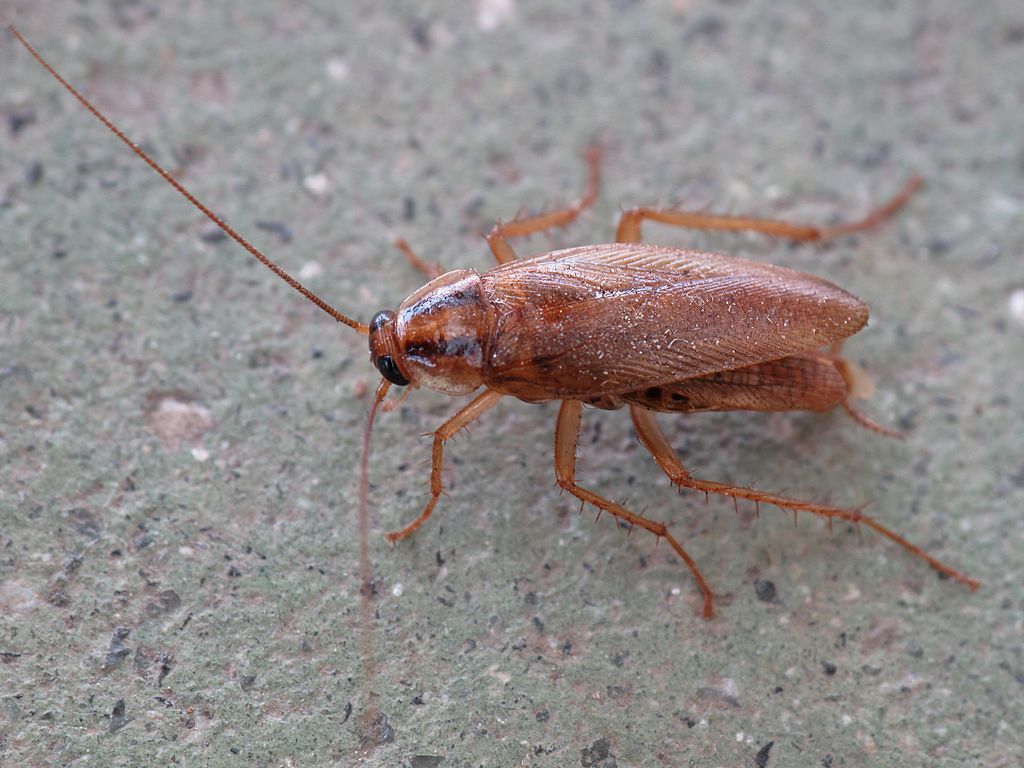
German cockroaches lurk in corners and crevices, scattering when the lights come on and making you do multiple double-takes, wondering what you just saw.
They are also very persistent with their quest for food. They invade your home and make those personal, intimate spaces their own. Once inside, they can multiply quickly. In fact, the female German Cockroach can carry as many as 40 eggs at a time, producing up to three to four generations of pests in her lifetime. So in as little as three months, you could go from a couple of cockroaches to a big infestation.
Identification Facts
- German cockroaches are the most worrisome cockroaches for Maryland residents. They are light brown with two stripes and about only a bit over ½ an inch long as adults.
- These pests can be found in any moist, warm areas where food and water can be found -- usually kitchens and bathrooms.
Prevention Tips
- Wash dishes and put them away after eating.
- Clean up crumbs and spills immediately.
- Take out the garbage before bed.
- Remove grease from the stovetop
- Seal food in containers.
- Mop floors on a regular basis.
Treatment Tips
- An exterminator will look at your kitchen, bathroom, closets, basement, and attic, possibly using glue traps to determine how many cockroaches are around and where they’re hanging out the most if it’s not apparent from the inspection. Then they will determine your level of infestation and come up with a treatment plan.
- Pest control professionals use crack and crevice applications to eliminate cockroaches.
- For larger infestations, pest control pros use gel baits and insect growth regulators to battle your cockroach problem.
- Small infestations can be managed in 1 to 2 weeks, while larger infestations could take 1 or more months to eradicate.
- Once the interior infestation is gone, exterminators will usually come back quarterly for inspections and apply exterior perimeter applications to keep cockroaches out.
20. American Cockroaches
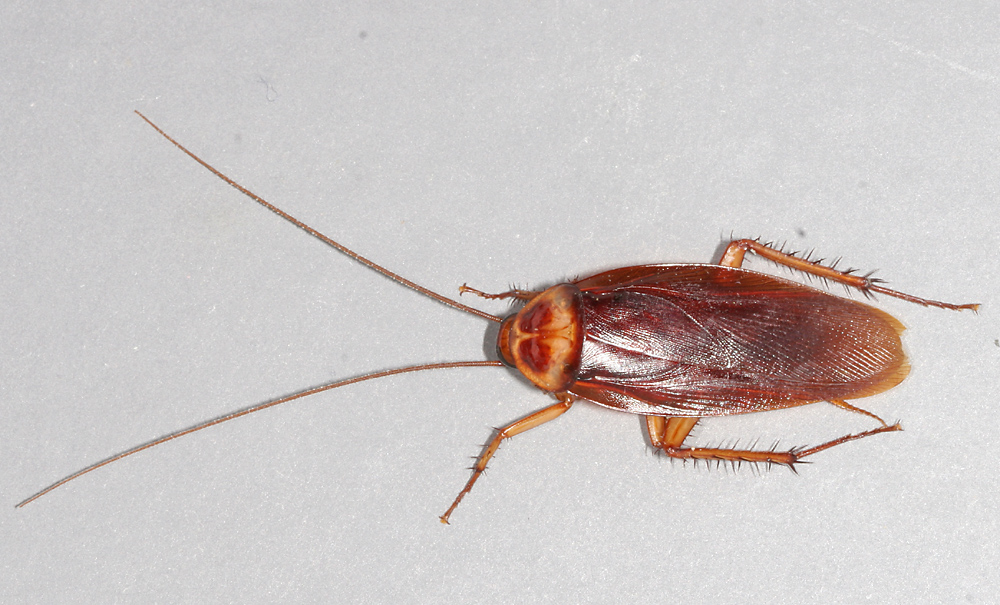
Just the thought of cockroaches near your food or your personal space gives you the shivers. It’s like a nightmare comes alive.
American cockroaches love warm, humid areas like wood piles. Their hangouts include garbage and trash cans. They don’t survive outside very well in Maryland winters.
When their outdoor diet of leaves, fungi, algae, and other organic matter becomes limited, they look to your home for sustenance.
Identification Facts
- The American Cockroach is reddish-brown and about 1.5 inches long as an adult.
Prevention Tips
- Ensure your crawl spaces and basements are well-ventilated. Use dehumidifiers to limit humidity indoors.
- Seal any cracks or holes around windows, doors, and foundations.
- Eliminate standing water around your home.
- Clean your kitchen and bathroom areas regularly.
Treatment Tips
- An inspection is the first step an exterminator will take to find out what type of cockroach you have and to determine the extent of your infestation.
- Treatments typically include crack and crevice insecticide applications.
- Gel baits and insect growth regulators may be necessary to help battle larger American cockroach problems.
- Eradication methods can usually take care of cockroaches in a couple weeks, but it can take 1 month for larger infestations.
- Quarterly inspections and exterior treatments are essential in keeping these pests from returning to your home.
21. Oriental Cockroaches
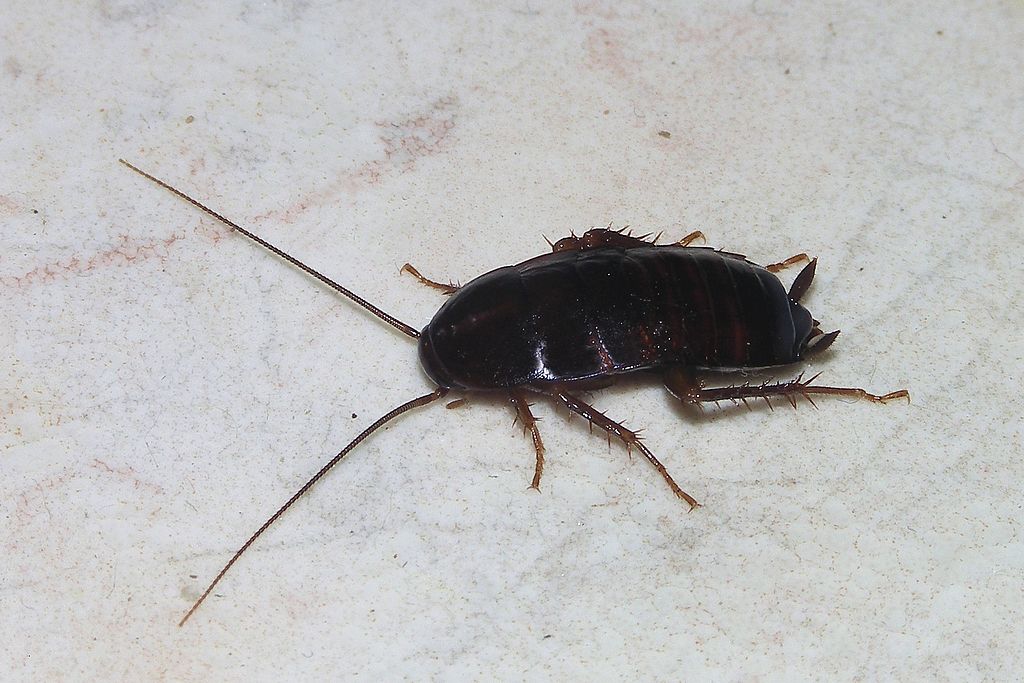
Oriental cockroaches can seem to come out of nowhere. Like a personal violation, they creep up on you, and it can feel like there’s nothing you can do to stop them.
This species of cockroach hails from Africa and is sometimes referred to as a water bug.
Populations peak in late summer. They will happily move inside to your basement, crawl spaces, kitchens, utility rooms, and other locations that provide warmth and humidity.
Oriental cockroaches feed on crumbs, spills, and tiny food scraps, hiding eggs in unsealed food or pantry products.
Identification Facts
- Oriental Cockroaches are black and about 1 inch in length.
- They have dark, smooth bodies.
- Oriental cockroaches are smaller than American cockroaches but larger than German cockroaches.
- While most cockroaches move quickly, this species is slower than the other two species typically found in Maryland.
Prevention Tips
- Look for gaps in siding, cracks leading into your basement, spaces where pipes enter the walls, and any other holes near the ground. Seal them.
- Clean up landscaping and clear leaves and debris around windows and doors. Stack wood piles 20 feet away from your home.
- Sweep up crumbs and wipe counters frequently.
- Prevent clutter in storage areas.
Treatment Tips
- An exterminator will inspect your home for Oriental cockroaches and potentially use glue traps to determine the location and degree of infestation.
- They use this data to craft a treatment plan.
- Crack and crevice insecticide applications can help eliminate cockroaches.
- For bigger infestations, gel baits and insect growth regulators may be necessary.
- Oriental cockroach removal can take anywhere from 1 to 2 weeks to more than 1 month, depending on the degree of infestation.
- Exterminators highly recommend quarterly inspections and perimeter applications after cockroaches are evicted from your home.
22. Mice
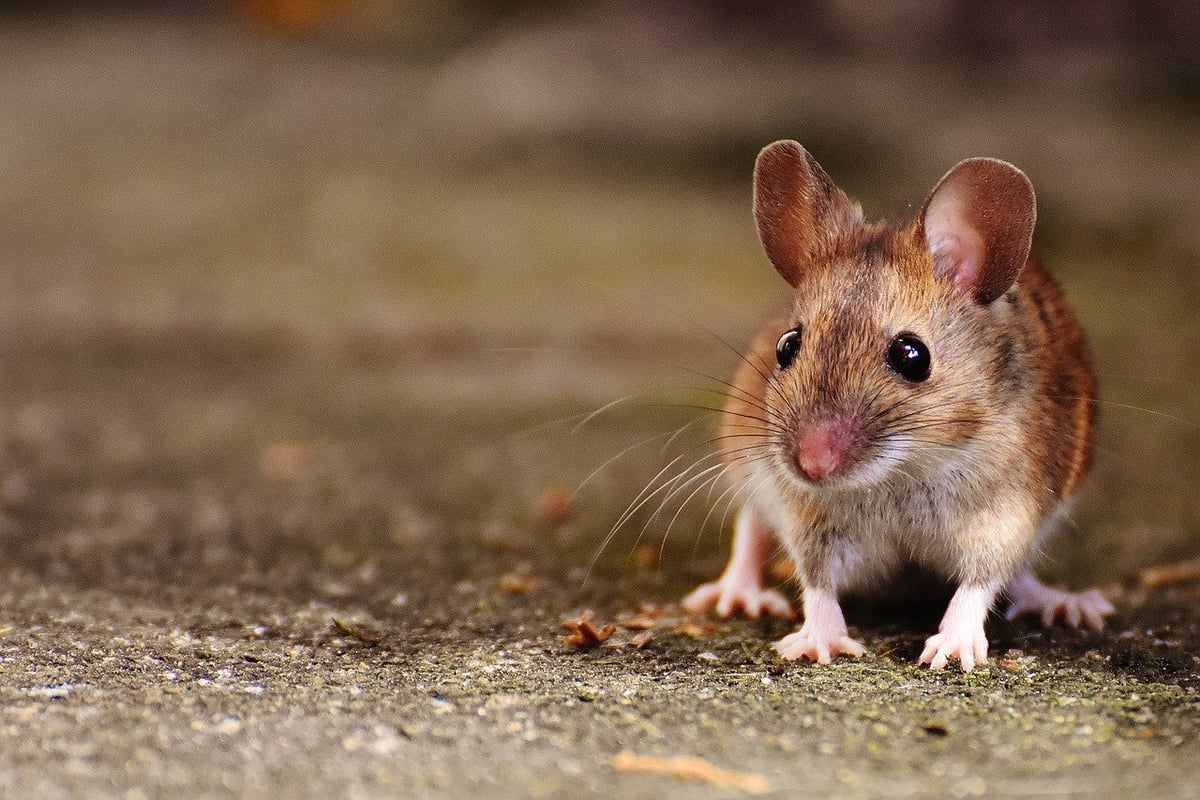
Unfortunately, mice in your house often go undetected. That’s where that phrase “quiet as a mouse” comes from.
They are small and sneaky and can squeeze through dime-sized openings to find little bits of food to eat and all sorts of materials to use to make their nests.
During the fall and winter, they seek warmth and escape from the outside elements. In the spring, they are looking for places to nest and grow their families. Your home, garage or shed can provide all of their needs.
Identification Facts
- Mice are typically light brown or grey with whitish bellies.
- They range in size from 2.5 to 4 inches long.
- Mice tails grow to the same length or even longer than their bodies.
- Mice have large, round ears.
- Usually, there’s no such thing as having only one mouse. A female mouse can have anywhere from five to 12 babies in one litter. And she can have between five and 10 litters a year.
- Look for mouse poop if you suspect an infestation. Each mouse can drop up to 75 of those little black pellets a day.
- If you find little caches of pet food or birdseed behind appliances or random materials like paper, cotton balls or twine in random, hidden places, mice are likely causing these imperceptible disturbances as they nibble food or attempt to build nests.
Prevention Tips
- Repairing or sealing any holes or cracks that provide mice with easy entry to your home or garage is step number one.
- Because mice seek nibbles, crumbs and spills left behind from cooking, regularly cleaning floors and countertops to eliminate these temptations is wise.
Treatment Tips
- If exterminators find holes up to a few inches in diameter, they can seal them with caulking and copper mesh. Mice don’t like to chew on copper mesh, so it’s a great tool to keep them from coming back through their regular entry points.
- Exterminators will remove and clean up after nests if they find them during your home inspection.
- Pest control professionals can place snap traps in enclosed spaces, garage corners and behind appliances -- anywhere exterminators detect activity. They place traps at right angles to walls with bait nearest the wall.
- Glue traps can be placed in similar locations to snap traps. Mice that encounter the traps are immobilized by adhesive.
- Sometimes exterminators use bait stations that are pet- and tamper-proof so they are safer for use inside your home. They precisely place them and check on them because the bait does need to be replaced regularly to ensure they are working.
23. Voles
.2412171416369.jpeg)
Voles are busy, busy critters in your Maryland landscape. In fact, they are active day and night, year-round.
Voles, unlike their friends moles, spend most time above ground. Voles are vegetarians, meaning they eat roots, bulbs, seeds, tree bark, and plant foliage. Because of their diet, they tend to enjoy flower beds and hang out under areas where you have bird feeders with seeds.
Their tunneling and nibbling can hurt plant roots, causing them to dry out. They are particularly harmful to boxwood roots.
Identification Facts
- Voles are compact little rodents with short, stocky bodies, short legs, and short tails.
- They have reddish-brown or black fur.
- They create elaborate surface runway systems -- 1 to 2 inches wide -- with many burrows.
- Their tunnels aren’t raised and they have open entrance holes you can see in the dirt.
Prevention Tips
- Remove excess mulch, thatch, weeds, and litter from your yard regularly.
- Mow lawns regularly.
- Encourage natural predators like snakes and hawks.
Treatment Tips
- You can use repellents to alter the taste of your plants and make eating them undesirable, such as those containing an ingredient called capsaicin (the same ingredient that makes chili peppers spicy).
- Have a lawn and pest control professional inspect your landscape for voles and suggest a treatment plan to get rid of them.
24. Mosquitoes
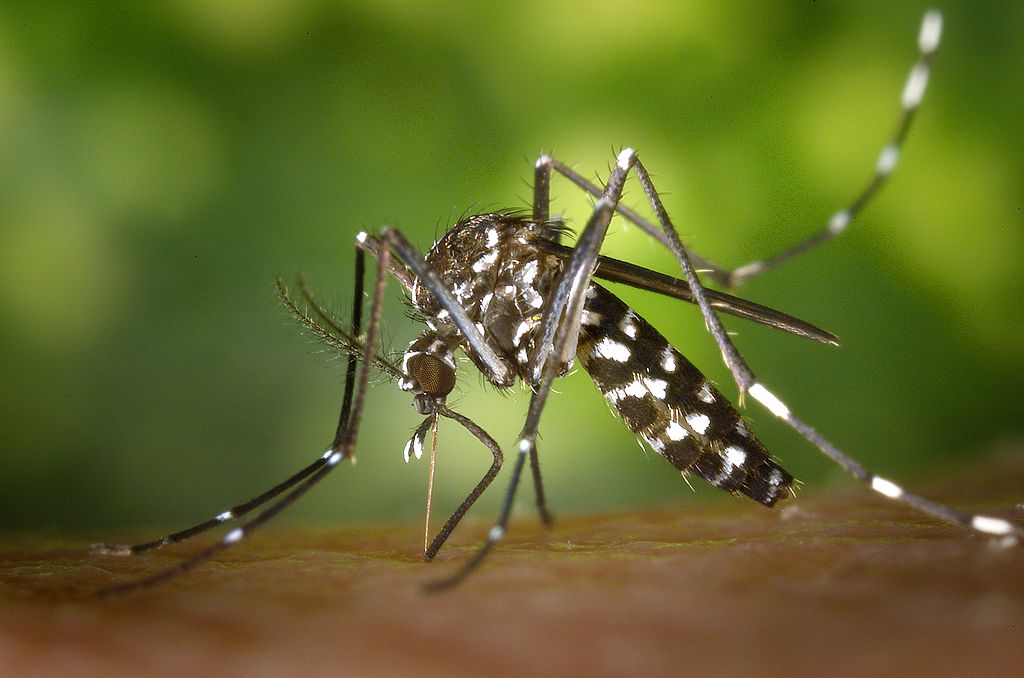
All you want to do some evenings is enjoy a little relaxation time in your backyard. But when mosquitoes strike, you can’t run back inside fast enough.
From their high-pitched whirring near your ears to their itchy bites, mosquitoes are probably one of the most annoying outdoor pests. Add to that the fact that they are the biggest transmitters of deadly diseases like West Nile virus and Lyme disease, and this just makes you fear their presence in your yard even more.
But it doesn’t have to be that way. There are ways you can get rid of mosquitoes in your yard and take back your outdoor enjoyment time.
Identification Facts
- Three main mosquito types are usually found in Maryland yards: Asian tiger, yellow fever, and common house mosquitoes.
- Asian tiger and yellow fever mosquitoes can breed in very little water -- watering cans, rain barrels, trash can slides, birdbaths, etc.
- Asian tiger populations peak from May through September.
- Yellow fever mosquito eggs don’t typically survive Maryland winters.
- Common house mosquitoes prefer permanent pools of stagnant water.
- A female mosquito can lay up to 400 eggs at one time in standing water. Those eggs can hatch into larvae in three days. Twelve days later, you have adult mosquitoes buzzing around for their 14 day lifespan. The cycle continues.
Prevention Tips
- Keep your gutters and downspouts cleaned out. The organic materials in gutters from fallen leaves mixed with standing water make the perfect mosquito breeding grounds.
- Rinse out or drain birdbaths, flowerpots, pet bowls, and other things that collect water outdoors at least weekly or every four or five days.
- Monitor hidden places where small amounts of standing water can collect. For instance, if you have a French drain going away from the house to the back of the yard, water can collect in the ridges of that corrugated pipe. This is enough water to breed mosquitoes.
- Minimize mosquito harborage places by limiting the places where they like to hide. Make sure your trees and shrubs are properly trimmed and tidy.
- Limit woodpiles and other things near your home that create these ideal conditions.
Treatment Tips
- Pest control professionals recommend mosquito control every 30 days from April through October.
- Experts in mosquito removal use backpack misters and release a fine mist, targeting the undersides of trees and shrubs, under decks and near other common harborage places.
- By controlling and limiting adults, pest control pros also limit the production of more eggs. Mosquitoes are constantly breeding. That means that the populations controlled in one year can also limit the number of mosquitoes the next year.
25. Fleas

Fleas are those pesky, wingless insects with long, flat bodies that feed on blood.
Fleas tend to come along on outdoor critters like mice, rabbits, or squirrels. That’s how they end up in your yard on the hunt for their next blood meal, which can be your pets or even you.
Once fleas come inside on your pet’s fur, they multiply. Most people don’t realize they have a flea problem until it’s a full-blown infestation. Female fleas can produce eggs quickly, becoming a big issue in just a few months. Once infestations grow to a sizeable level, you might see them hopping on carpets and furniture.
Identification Facts
- Fleas are tiny -- 1 to 3 millimeters in length.
- They move quickly and are difficult to spot and catch because they jump.
- You’ll usually see your pet itching, scratching, licking, and biting their fur before you will see fleas.
Prevention Tips
- Protect your pet with flea prevention medication.
Treatment Tips
- Pest control professionals apply liquid-based products to common flea harborages, such as tall grasses, under tree canopies, under decks, or near other wet areas.
- Experts recommend applications every 30 days from March or April through October.
- While six applications throughout the season are best, you don’t want to have fewer than three applications during a season to ensure flea control.
26. Ticks
.2412171416367.jpeg)
Ticks belong to the arachnid group. They crave blood from animals and humans. Drinking blood enables them to produce and lay more tick eggs.
Your backyard can be a haven for ticks. They can come along through other wild animals like deer, and then hang out in your tall grasses. And if you have pets or family members that go outdoors, when they come inside, they bring ticks -- and the diseases they carry -- with them.
Since tick-borne infections like Lyme disease are on the rise, it’s important that you don’t ignore tick sightings.
Identification Facts
- Most ticks are dark in color -- from brown to black.
- They have 8 legs.
- The common ticks found in Maryland are American dog ticks, deer ticks, brown dog ticks, and lone star ticks.
Prevention Tips
- Keep your lawn well-mowed to a 3- to 3.5-inch height.
- Wear long sleeves and pants when working in wooded or grassy areas on your property.
- Protect your pet and family members with tick prevention medications or sprays.
- Inspect family members and pets for ticks when they come indoors after playing outside during tick season.
Treatment Tips
- Applications are usually liquid-based. Professionals apply products to flower and shrub beds and other harborages, such as in tall grasses, under tree canopies, under decks or near other wet areas on your property.
- Tick spray should be applied every 30 days, beginning in March or April when temperatures hit 50 degrees and ticks become more active. Treatments usually end in October.
- Professional lawn and pest control companies recommend a minimum of three applications to ensure adequate control. But six applications through the season is best because tick control products usually only have a 30-day residual.
27. Termites
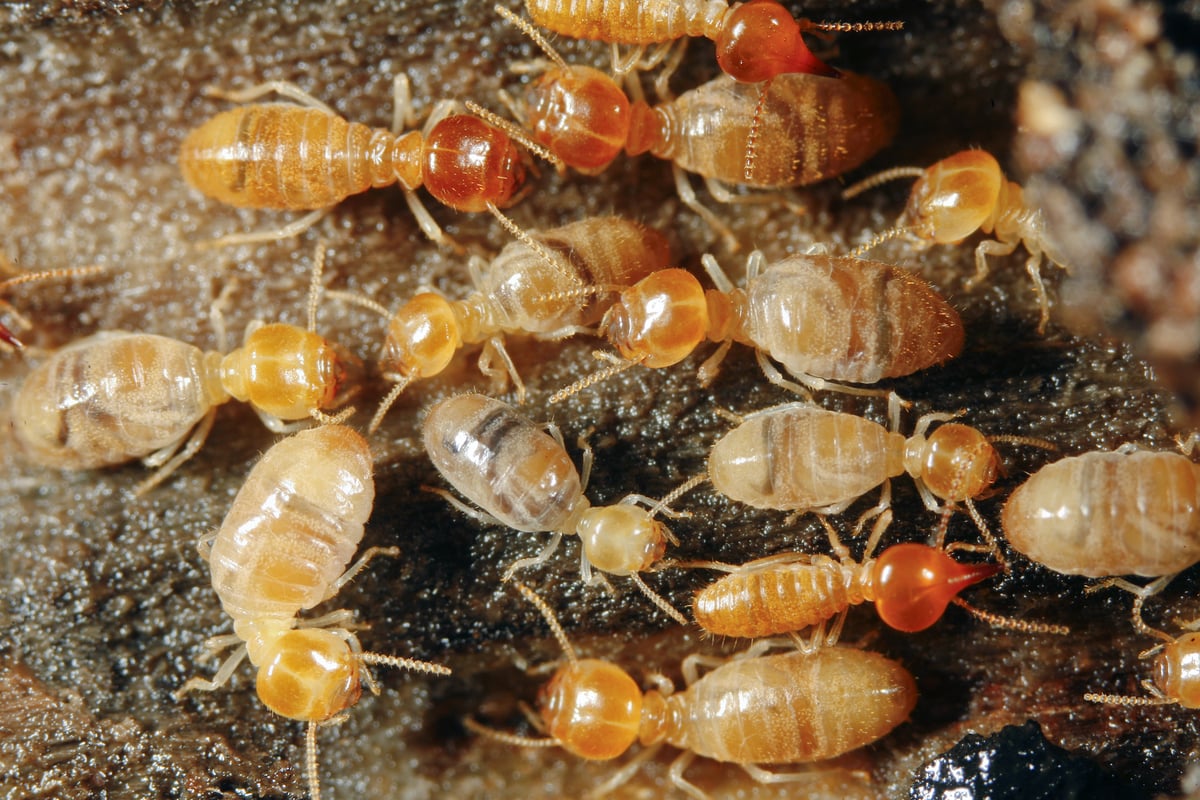
Does termite damage worry you? If it does, you’re not alone.
In fact, the Environmental Protection Agency says termites cause billions of dollars in structural damage every year.
The problem is many people don’t even know termites are there until it’s too late. No one wants to think that these pests are silently feasting on their home: their biggest investment. This is why termite inspections and control are so important.
Identification Facts
- Termite swarms are triggered by warmer weather and rain in April and May, when winged termites fly into the air and then drop to the ground, shed their wings and find a mate, beginning a new colony in the soil.
- Mud tubes are big giveaways that you might have termites. These pencil-thick tubes usually extend over foundation walls or support beams. Termites build mud tubes so they have shelter as they travel between their underground colonies and your home to find wood to eat.
- Termite-damaged wood is usually hollowed out and possibly crumbling, which means if you push on it with your thumb it might cave in because it’s eaten out.
Prevention Tips
- Don’t let moisture accumulate near your foundation.
- Reduce moisture and humidity in crawl spaces.
- Store firewood 20 feet away from your home.
Treatment Tips
- Termite control utilizes specialized equipment, including large capacity spray tanks and long rods for injecting the soil with a treatment product.
- Your termite control professional should be using top-rated termiticides. These products have longer residual -- multiple years -- versus just a quick annual blast. You want the product to be safe and effective, as well as protect your home from termites for years.
- Professionals will often use a trench-and-rod approach for termite control. In this process, experts trench around the exterior of the home and inject insecticide by the foundation to create a barrier so termites won’t come back in. Those that hit the barrier are met with insecticide.
- Annual termite inspections are vital to maintain termite barriers. In fact, professionals will guarantee treatments, as long as owners keep up with an annual inspection to ensure termites haven’t broken through the barrier.
28. Bed Bugs
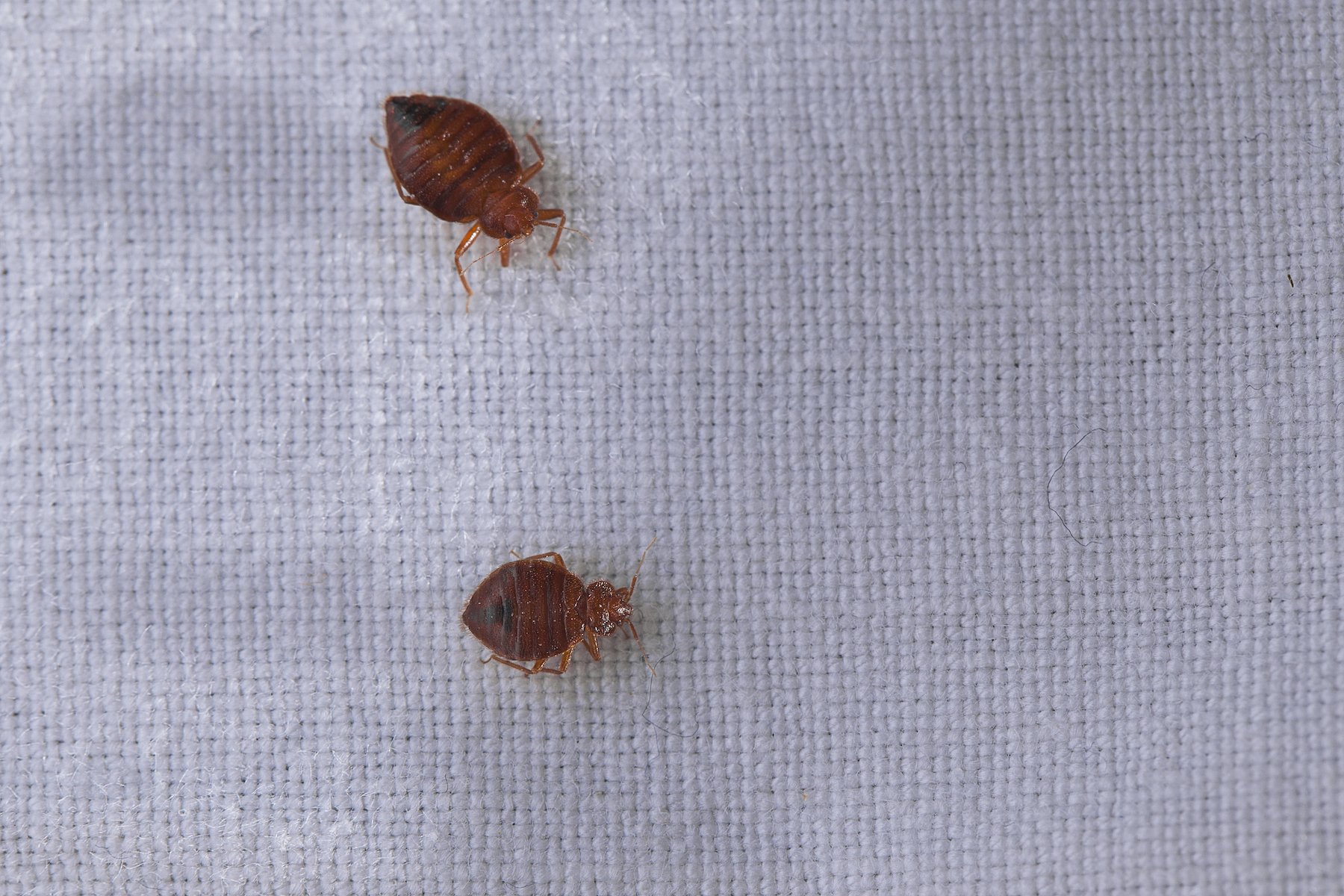
Once bed bugs get into your home, they take over, turning fresh sheets and linens into pest havens. And, unfortunately, they are especially bad in the mid-Atlantic area. Much of the blame for their resurgence is the increase in people traveling and shipping more goods around the world.
Bed bugs feed on blood. Discovering bed bugs in the home can be devastating because they are so invasive. If allowed to thrive, bed bugs will continue to multiply throughout your home; females can lay up to 50 eggs at a time. This is why once you bring them in, getting them out can be tough without professional help.
Identification Facts
- Bed bugs are light to reddish-brown, oval, and wingless.
- They are ¼ to ⅜ inches long before feeding; after feeding, they are bloated and dark red.
- Eggs are very small -- 1/32 of an inch -- and found in clusters of 10 to 50.
- Bed bugs bite all over the body, usually on exposed areas while a person sleeps.
- If you suspect bed bugs, check around the edges of your mattress and look under the edge of your headboard for blood spots.
Prevention Tips
- Get rid of clutter in your home.
- Inspect used items like furniture, mattresses, and box springs that you purchase before bringing them inside your home. This can include items that you purchase new, such as clothes.
- After returning home from a trip, wash and dry all clothing.
Treatment Tips
- Contact a professional pest control company that specializes in bed bug control.
- Exterminators will inspect your home and find the core areas of the problem and implement elimination strategies, which typically include three targeted treatments.
- Follow-up inspections and treatment may be necessary.
29. Carpenter Ants

Carpenter ants are among the largest ants in the United States, and they are more than just a nuisance. They can cause significant structural damage to your home by hollowing out wood for nesting.
Unlike termites, carpenter ants do not eat wood but remove it to create galleries for their colonies. If you hear faint rustling noises in the walls, it might be a sign of carpenter ants at work.
Identification Facts
- Carpenter ants are large, ranging from 1/4 to 3/4 inches long.
- They are usually black but can have reddish or yellowish coloration.
- Look for wood shavings near woodwork or wall voids as evidence of their nesting.
Prevention Tips
- Eliminate moisture problems to make your home less attractive to carpenter ants.
- Seal any cracks and crevices on the outside of your home, especially where pipes and wires enter.
- Keep tree branches and other plants cut back from the house.
- Store firewood away from the home and off the ground.
Treatment Tips
- A professional pest control service should be contacted if carpenter ant activity is suspected.
- Treatment often involves tracking the ants back to their colony and directly treating the nest.
- Regular monitoring and maintenance to prevent future infestations are recommended.
30. Fruit Flies

Fruit flies are tiny pests that are commonly found in kitchens and where fruits and vegetables are stored. They are especially prolific if these foods are left uncovered and start to ferment.
These flies can breed extremely quickly, with females laying up to 500 eggs, which can hatch in as little as 24 hours, leading to rapid population growth.
Identification Facts
- Fruit flies are very small, about 1/8 inch in length.
- They have red eyes and a brownish head and body with a lighter abdomen.
Prevention Tips
- Keep kitchen surfaces clean and free of food scraps.
- Store fruits and vegetables in the refrigerator rather than on countertops.
- Regularly empty and clean trash cans and recycling bins that contain food waste.
- Ensure that windows and doors have tight-fitting screens to prevent flies from entering.
Treatment Tips
- Use vinegar or fruit-scented traps to capture and kill adult fruit flies.
- Boil water and pour down drains to kill any larvae that may be breeding in residue inside pipes.
- A professional pest control service can provide further assistance if infestations persist or are severe.